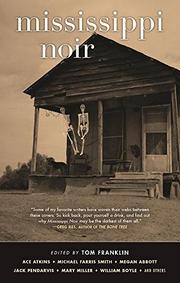Many of these flicks involve the terror of the everyday, of the mundane. The “terror of daylight” as some have put it.
So here’s the list as they popped into my head, in no particular order:
Pacific Heights, with Michael Keaton, Melanie Griffith, Matthew Modine. I’m not a big fan of horror movies these days. They’re just too predictable for my tastes, plus they’re more shock fests than true horror. But to me, while probably technically a neo-noir, Pacific Heights is a true horror movie. Why? Because it’s the kind of thing that can happen to anyone. We’ve all probably experienced that bad neighbor (or tenant) or the guy who lives in the apartment upstairs and makes noise at all hours of the night. Well if those things bug you, you’ll be creeped out by this movie.
Malice: with Alec Baldwin, Nicole Kidman, Bill Pullman. Written by Aaron Sorkin of West Wing fame. There’s just something about this movie that I really like. I think it’s very clever, good twists. Engaging cast. I don’t want to give away too much but you think this is going to be a straightforward serial killer mystery, but it spins off in a totally unexpected way.
Masquerade, with Rob Lowe and Meg Tilley. Part love story, part crime movie, but very noir in the sense that everyone is doomed, even as they’re redeemed.
Body Heat, with William Hurt and Kathleen Turner, written and directed by Lawrence Kasdan. Double Indemnity for the 80s, and today. I recently posted about this movie on FB and found some people hate it, so I guess to each his own, but for me personally this is the perfect updating of noir to a more recent (if you can consider the 80s recent) era.
The Firm, The Client, The Rainmaker, Pelican Brief: A John Grisham Quartet, starring respectively: Tom Cruise, Susan Sarandon, Matt Damon, Julia Roberts/Denzel Washington. All of them really good movies. And, while not neo-noir really, these also help satisfy that craving for crime, suspense darkness and evil and are entertaining at the same time.
Derailed, with Clive Owen and Jennifer Aniston, based on the novel by James Siegel. I didn’t like the movie when it first came out, but it’s grown on me. For whatever reasons, even though I didn’t like it the first time I saw it, I gave it another shot. And another. And each time grew to like it more. A hapless family man is lured into a trap by lust – a very noir theme. And the bad guy (played to rotten perfection by Vincent Cassel) is so vicious and cruel, it makes my skin crawl every time.
The Lincoln Lawyer, based on the novel by Michael Connelly. Matthew McConaughey playing a sleazy lawyer – what’s not to love? When I first read the Connelly book this is based on, I wasn’t a big fan of the character, but the movie gave me a new appreciation for him. While not classically noir, you could make a case for the Ryan Philippe character as an homme fatale.
Fracture: A clever, intelligent psychological thriller. Great twists in this one. Anthony Hopkins and Ryan Gosling play an intriguing cat and mouse game. I love this one so much I bought the download off Amazon so I could watch it multiple times.
Final Analysis, with Richard Gere, Kim Bassinger and Uma Thurman. Very Hitchcockian with a twist of noir, reminiscent of Vertigo. Another one I could watch over and over.
Drive: Ryan Gosling as a movie stunt driver, who moonlights as a getaway driver for crooks. But that’s just the plot. The “story,” as one development exec used to tell me is something else altogether. The film has an urban fairytale quality that makes it very memorable.
The Big Easy, with Dennis Quaid and Ellen Barkin. Not noir, but fun to watch. After seeing this movie I went out and bought a bunch of Cajun/Zydeco music CDs.
Devil in a Blue Dress, starring Denzel Washington, as Walter Mosley’s Easy Rawlins. The book is one of my faves and, of course, since it’s the first Easy book the one that turned me onto the character. I didn’t love the movie the first time I saw it, but it’s grown on me over the years in subsequent viewings. And it plays off the noir theme of the soldier returning home after the war to a very changed country.
Double Jeopardy / Kiss the Girls: Ashley Judd double feature. Both are great fun to watch. Ashley Judd at her best in these kind of action flicks. Instead of playing the femme fatale here, she is our every “man” noir hero/heroine, who takes matters into her own hands.
Angel Heart, with Mickey Rourke, Robert De Niro, Charlotte Rampling. I know people who claimed to have figured it out before the leader even finished spooling through the projector. I guess I’m not that bright. But definitely a good twist. Very dark. And a beautifully shot film. This was when Mickey Rourke still had a promising career.
John Dahl triple header: The Last Seduction, Kill Me, Again, Red Rock West, starring respectively: Linda Fiorentino, Val Kilmer, Nicholas Cage. All great neo-noirs based on the classic formula, with modern twists. I wish Dahl would make more.
The Grifters, The Getaway: Noirs based on Jim Thompson novels that start with G. And it must be noir if it’s Jim Thompson, right? Starring John Cusack and Angela Huston in the former, Alec Baldwin and Kim Bassinger in the latter.
So that’s my starter list. What are some of your fave neo-noirs?
***
And now for the usual BSP.
I’m happy to say that my short story “Bunker Hill Blues” is in the current Sept./Oct. issue of Ellery Queen. It’s the sequel to the 2016 Ellery Queen Readers Poll winner and current Macavity Award nominee “Ghosts of Bunker Hill”. And I’m surprised and thrilled to say that I made the cover of the issue – my first time as a 'cover boy'! Hope you’ll want to check it out. Available at Ellery Queen, newstands and all the usual places.
My story “Blood Moon” appears in “Day of the Dark, Stories of the Eclipse” from Wildside Press, edited by Kaye George. Stories about the eclipse. Twenty-four stories in all. Available on Amazon.

















































